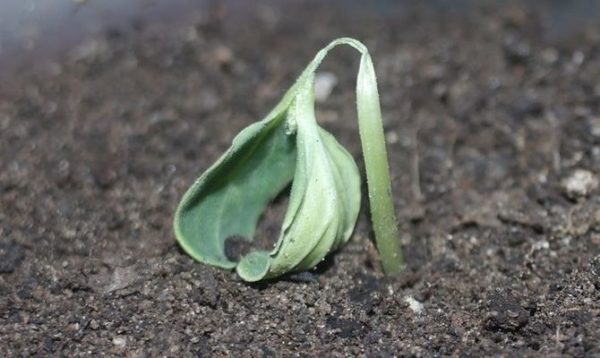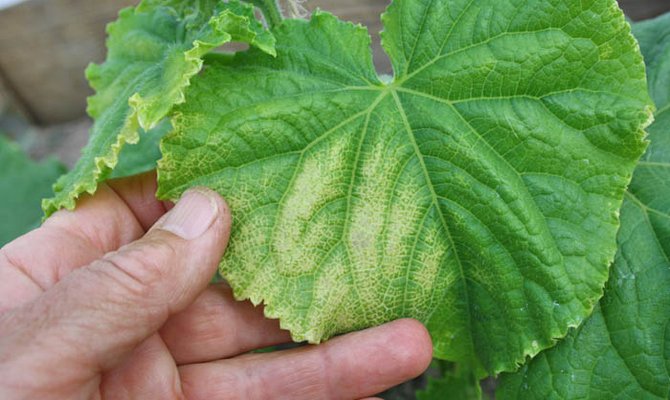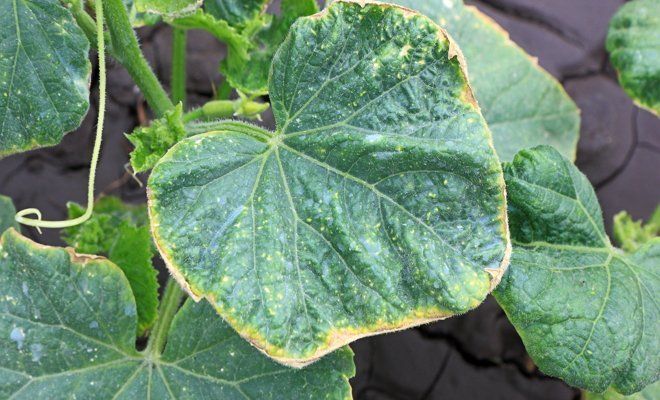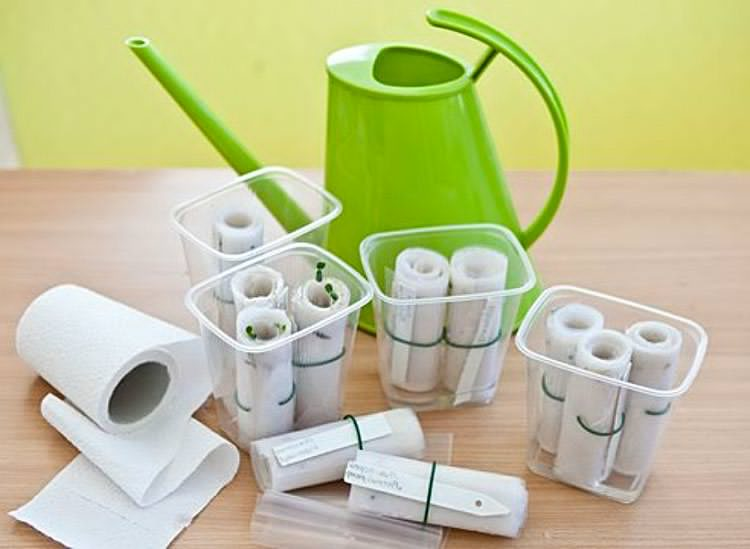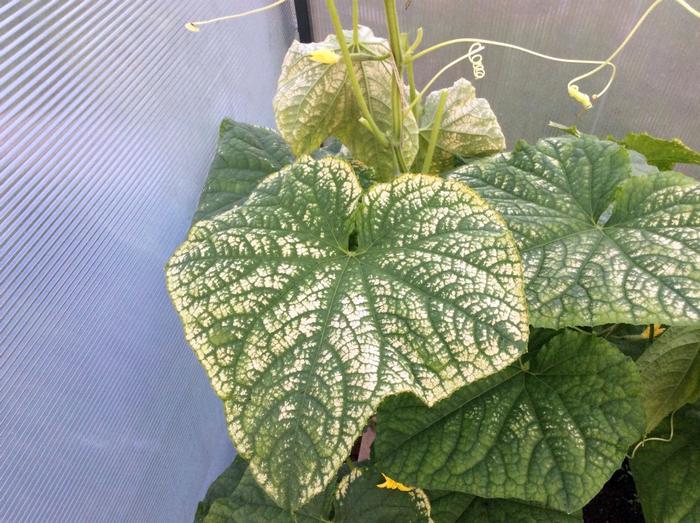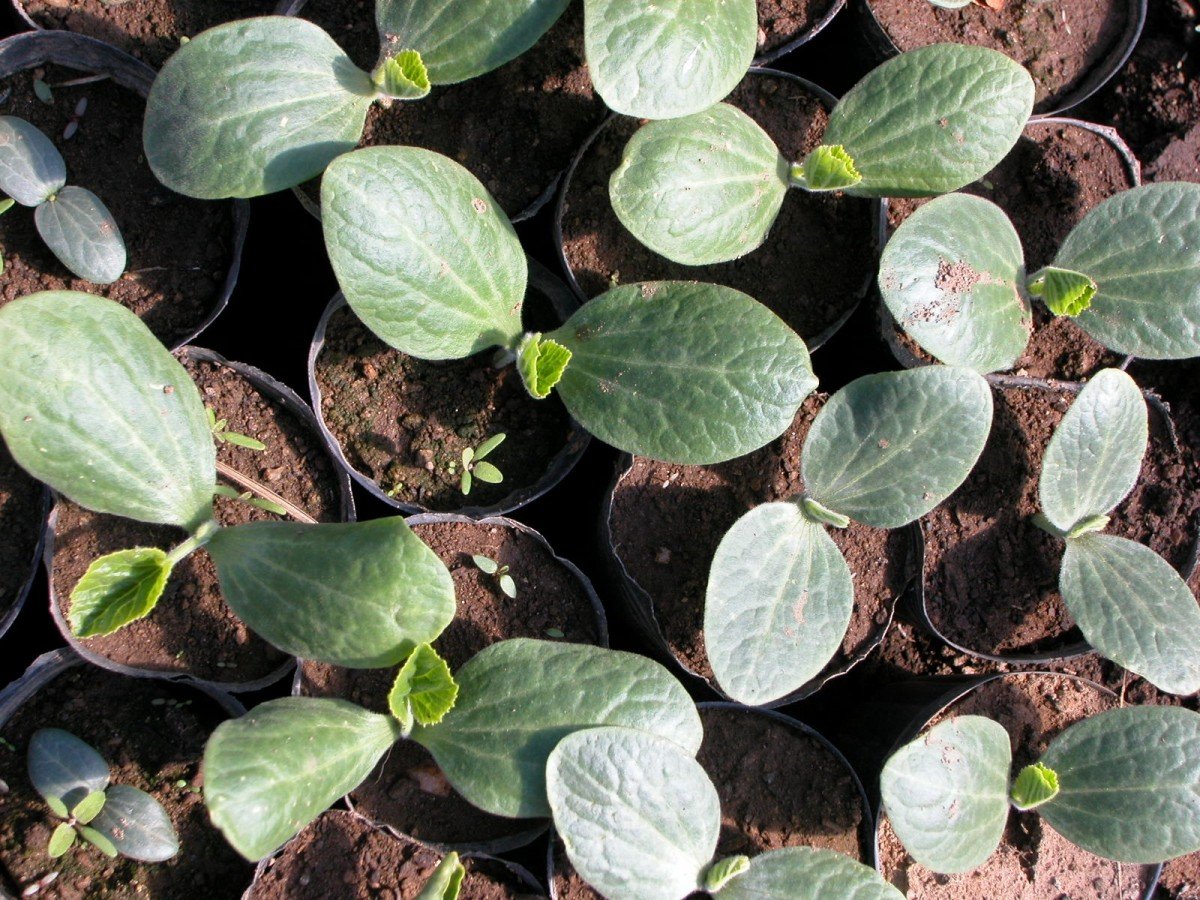Content:
Cucumbers are considered quite capricious in terms of growing conditions. The slightest violation of the conditions can lead to a deterioration in their condition, to diseases, and sometimes to death. Therefore, before starting to grow this delicate plant, you need to familiarize yourself with the conditions that they should create, what diseases are especially dangerous for seedlings, how to treat plants and how to deal with pests.
The most acceptable conditions for the development of cucumber seedlings
In order for the seedlings of cucumbers to grow and develop actively, they need to create optimal conditions: lighting, temperature, humidity and feeding.
Strong and robust seedlings will grow if, during their growth period:
- daylight hours were at least 11 hours. If it is shorter, additional lighting is installed next to the plants (fluorescent lamps or other lighting fixtures);
- indoor temperature during the day - 21-23⸰С, at night - 15-16⸰С;
- water the plants abundantly once every 7-9 days with filtered water at room temperature;
- fertilizers are applied at least 2 times during the growing of seedlings. The first feeding is carried out 12-14 days after the emergence of shoots, for this, 2 teaspoons of urea are diluted in 6 liters of water. The next feeding is carried out after 7 days, it is prepared as follows: 2 teaspoons of nitrophoska are diluted in 6 liters of water.
Causes of death of cucumber seedlings
The seedlings can be damaged by pests or suffer from disease. Moreover, a similar misfortune can happen when growing in a house on a windowsill, in a greenhouse or in a greenhouse.
The main diseases of cucumber seedlings:
- root rot,
- gray rot,
- white rot,
- blackleg,
- powdery mildew,
- downy mildew,
- bacteriosis,
- ascochitis,
- cladosporiosis.
Most often, the following pests can be found on cucumber seedlings:
- melon aphids,
- spider mite,
- root knot nematode,
- greenhouse whitefly,
- slugs,
- wireworm
- bear,
- thrips,
- cucumber gnats.
Diagnosis of seedling diseases
To help young plants to cope with an illness or "harmful" bugs, you need to know their symptoms well.
Changes in the condition of plants caused by diseases:
- spots appear on the foliageoily to the touch, green in color, which then turn brown and begin to dry out - these are the main signs of downy mildew;
- the leaf is covered with a bloom of white colorwhich quickly spreads over the entire surface of the sheet plate. As a result, the entire aerial part of the plant can turn white. Damaged foliage quickly begins to dry out, seedlings die as a result - this is how powdery mildew manifests itself;
- the leaves wither on sunny days, the stems near the base begin to turn yellow and crack - these are the main signs of root rot;
- in places where side stems grow, gray spots appearstarting to rot - the cause of the disease is gray rot;
- if spickles turn yellow or rot - this is a sign of bacteriosis;
- with ascochitis on the aerial part of plants (including on the cotyledonous leaves) yellow spots appear, eventually changing color to gray;
- the appearance on the aerial part of the plant of a characteristic bloom of white color with subsequent decay is a symptom of white rot;
- appearance on foliage bloom of olive color, followed by drying - a symptom of cladosporia. The damaged areas begin to dry out and break;
- the base of the root turns black and thinns, then begins to rot, as a result the seedling dies - this is how the black leg begins.
If pests attack the seedlings of cucumbers, this can also be diagnosed by characteristic signs:
- when sticking spots appear on the foliage, covered with a black coating from the spores of a sooty fungus, the aboveground part quickly turns black and dries up - the plant is damaged by the greenhouse whitefly;
- the aerial part of the seedlings begins to wrinkle and curl - this is a symptom of the appearance of melon aphids;
- the seedlings wither, half-transparent larvae of the cucumber gnat are visible on the root system;
- if leaves gnawed at the edges are visible, and mucus remains on the soil, slugs have settled on the plants;
- the central shoot is deformed and dries up - the wireworm "attacked" the cucumbers;
- small dots appear on the foliage, a characteristic cobweb is visible on the reverse side - a spider mite has settled on the cucumbers;
- if the stems of the plants fell to the ground, and the shoots are bitten near the base, this is the bear "tried";
- the appearance of yellowish spots (later turning brown and drying) indicates that thrips appeared;
- growths and thickenings are visible on the root system, due to which the seedlings stop growing - the reason is the root nematode.
But not always changes in the appearance of the seedlings of these vegetables speak of diseases or pests. Often the reasons lie in the violation of the basic rules of plant care. The main signs of poor grooming are:
- the color of foliage and shoots begins to fade, because the seedlings lack minerals (or too much fertilizer has been applied);
- if the foliage becomes tough, and the top dries up, it means that a lot of fertilizer was applied;
- the edges of the foliage begin to dry, then the reason is too high or low ambient temperature;
- a yellowed edge of the foliage indicates poor lighting or excess moisture;
- seedlings do not grow - the problem is late planting in open ground.
Having figured out why the cucumber seedlings turn yellow or begin to turn white, you need to immediately begin to fight pests or diseases. A fight started in time can save the seedlings, and, therefore, the future harvest.
Treatment of diseases
In order to prevent the appearance of pathogenic microorganisms or pests on cucumber seedlings, you should start with preventive measures:
- follow the rules of crop rotation;
- water the seedlings with settled water;
- monitor the temperature, avoiding its fluctuations;
- do not loosen the soil around the seedlings;
- do not thicken the planting;
- regularly ventilate the room;
- soil and air humidity should be optimal for a given vegetable crop.
How to treat seedlings depends on the disease. Treatment methods can be varied - from treatment with copper sulfate or Bordeaux liquid to the use of fungicides and insecticides.
Sometimes the plot is too small and only one greenhouse can be built on it. In this case, summer residents grow cucumbers and tomatoes in the same greenhouse - vegetable crops that require different air and soil humidity, as well as air temperature. In this case, you can partition the greenhouse to create a specific microclimate for each plant.
Pest control of cucumber seedlings
The methods of pest control are about the same - such folk remedies as infusion of red pepper, onion peel, and garlic broth are very effective.
Slugs are most often simply picked from seedlings by hand.A soap solution is effective against spider mites, which is applied to the lower part of the foliage with a soft sponge, while washing off the pests.
Seedling resuscitation
Sick seedlings can be saved if the first signs of the disease are noticed in time:
- The seedlings are simply transplanted, while removing the diseased parts of the plant, and the places of the cuts are sprinkled with charcoal powder. Rotten or affected areas are necessarily cut off at the root system, then immersed in a light solution of potassium permanganate for disinfection. Sick plants are transplanted into separate cups, after having disinfected the soil.
- Treatment of the aerial part with phytosporin (or Topaz) is effective.
- Do not forget about the effective folk methods of resuscitation of seedlings: treatment with infusions based on garlic, onion husks or a mixture of red pepper with tobacco dust.
If you pay attention to the symptoms of diseases in time, then cucumber seedlings in most cases can be saved. Also, one should not forget about the implementation of preventive measures, thanks to which you can grow strong, healthy seedlings, and in the future, get a high yield.
